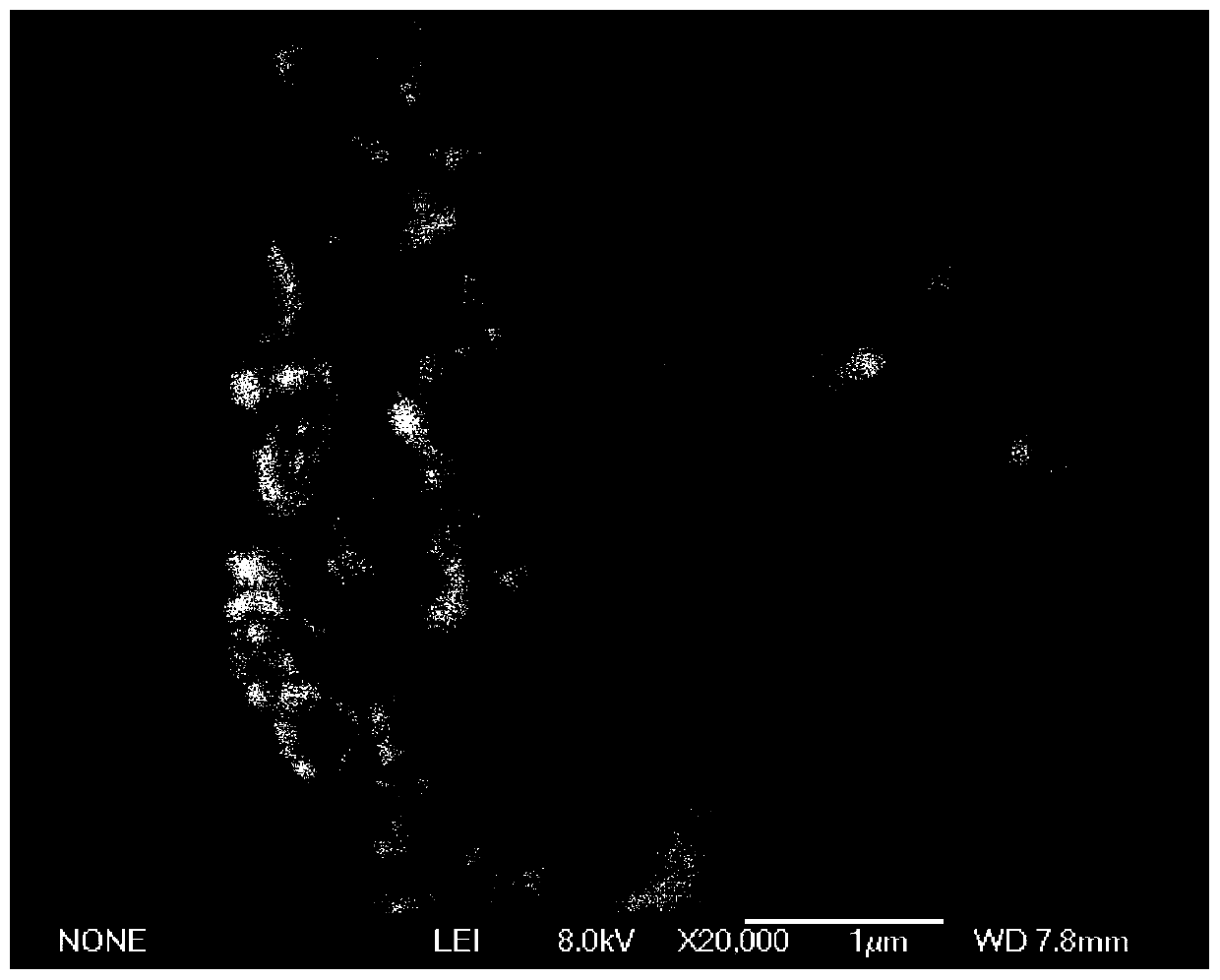Adsorption-catalysis composite material and application thereof to pollutant treatment
A composite material, adsorption and catalysis technology, applied in the field of photocatalytic materials, can solve the problem of low absorption, achieve excellent adsorption performance, wide range of visible light response frequency, and good removal effect
- Summary
- Abstract
- Description
- Claims
- Application Information
AI Technical Summary
Problems solved by technology
Method used
Image
Examples
Embodiment 1
[0025] The preparation method of the copper selenide-polydopamine-graphite phase carbon nitride adsorption catalytic composite material of the present invention comprises the following specific steps:
[0026] 1) Preparation of copper selenide materials
[0027] 2.52g of sodium sulfite and 0.79g of selenium powder were added to a round-bottomed flask containing 200mL of deionized water, heated in a water bath at 70°C with constant stirring, filtered after 3 hours of reaction, and the filtrate was stored in the dark. The filtrate was sodium selenite (Na 2 SeO 3 ). Weigh 6.25g of copper sulfate pentahydrate and dissolve it in 250mL of deionized water, add 25% ammonia water to the solution dropwise, stop adding when the resulting blue precipitate disappears, and obtain tetraammine copper sulfate (Cu(NH) 3 ) 4 SO 4 ).
[0028] Measure 40mL of ethylene glycol and add it to the reaction flask, add the prepared sodium selenite (Na 2 SeO 3 ) and tetraammine copper sulfate (Cu(N...
Embodiment 2
[0037] An automatic specific surface area and pore size analyzer was used to record the adsorption-desorption isotherm of the composite material for nitrogen, and the specific surface area of the adsorption catalytic composite was 186.6m obtained by the specific surface area analysis method. 2 ·g -1 , with an average pore size of 3.2 nm and a pore volume of 0.151 cm 3 ·g -1 . The adsorption catalytic material has a larger specific surface area and better adsorption performance.
[0038] figure 2 This is the nitrogen adsorption-desorption isotherm of the copper selenide-polydopamine-graphite carbon nitride adsorption catalytic composite material prepared in Example 1.
Embodiment 3
[0040] Experiment on the adsorption and catalytic degradation effect of the adsorption catalytic composite material obtained in Example 1 on methylene blue
[0041]1) Weigh 0.05g of composite adsorption catalytic material into a test tube, add 50mL to a concentration of 6.0×10 -5 mol / L methylene blue solution is put into the photochemical reactor, the stirring is turned on, the dark reaction is carried out first, and then the light source is turned on to carry out the photocatalytic reaction. Take a sample every ten minutes, measure its absorbance at the maximum absorption wavelength of methylene blue at 664 nm with a UV-Vis spectrophotometer, and calculate the concentration of methylene blue.
[0042] 2) The photodegradation rate D of methylene blue is calculated according to the following formula:
[0043]
[0044] C 0 : initial concentration; C t : Concentration at time t. The experimental results obtained are as image 3 shown.
[0045] from image 3 It can be se...
PUM
| Property | Measurement | Unit |
|---|---|---|
| Specific surface area | aaaaa | aaaaa |
| Average pore size | aaaaa | aaaaa |
| Pore volume | aaaaa | aaaaa |
Abstract
Description
Claims
Application Information
 Login to View More
Login to View More - R&D
- Intellectual Property
- Life Sciences
- Materials
- Tech Scout
- Unparalleled Data Quality
- Higher Quality Content
- 60% Fewer Hallucinations
Browse by: Latest US Patents, China's latest patents, Technical Efficacy Thesaurus, Application Domain, Technology Topic, Popular Technical Reports.
© 2025 PatSnap. All rights reserved.Legal|Privacy policy|Modern Slavery Act Transparency Statement|Sitemap|About US| Contact US: help@patsnap.com



